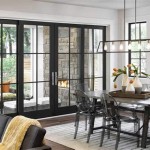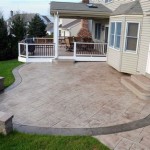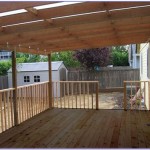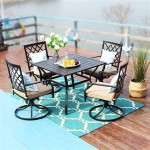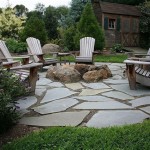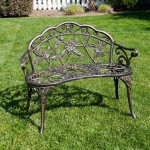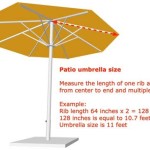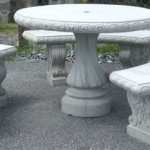Creating Stylish and Functional Small Patio Designs
Small patios present a unique design challenge: maximizing both style and functionality within limited square footage. Careful planning and thoughtful selection of elements are crucial to creating an outdoor space that feels both inviting and practical. This article explores key considerations and design strategies for crafting stylish and functional small patio designs.
Optimizing Space Utilization
The foundation of a successful small patio design lies in efficient space utilization. Every element must serve a purpose and contribute to the overall feeling of openness and functionality. Strategically selecting furniture, employing vertical design solutions, and incorporating multi-functional elements are paramount.
Furniture selection should prioritize compact and versatile pieces. Bistro sets, folding chairs, and stackable seating offer flexibility and can be easily stored when not in use. Built-in seating, such as benches with integrated storage, maximizes seating capacity while minimizing clutter. Consider furniture made from lightweight materials to facilitate easy rearrangement and adaptability to changing needs. Avoid bulky or oversized pieces that can overwhelm the limited space and hinder movement.
Vertical design is a powerful tool for expanding the perceived space of a small patio. Utilize walls and fences to create vertical gardens, install shelving units, or hang decorative elements. Climbing plants, trellises, and hanging planters add visual interest and greenery while consuming minimal floor space. Vertical gardens can also provide privacy and soften harsh architectural lines, creating a more inviting atmosphere. Wall-mounted lighting fixtures free up ground space and contribute to the patio's ambiance.
Multi-functional elements are indispensable for optimizing space efficiency. A coffee table with integrated storage can serve as both a surface for drinks and a container for cushions or gardening tools. An outdoor rug can define a seating area and add visual warmth, while also serving as a comfortable surface for bare feet. A portable fire pit can provide warmth and ambiance, while also functioning as a grilling surface. Selecting items that serve multiple purposes streamlines the space and reduces the need for excessive furniture.
Mirrors, strategically placed, can create the illusion of a larger space. By reflecting the surrounding environment, mirrors expand the visual boundaries of the patio and enhance the sense of openness. Consider using outdoor-rated mirrors to withstand the elements and ensure longevity. Avoid placing mirrors in direct sunlight to prevent glare and potential damage.
The layout of the patio should facilitate easy movement and interaction. Create a clear path of travel to prevent obstructions and ensure comfortable circulation. Arrange furniture to encourage conversation and create a sense of intimacy. Consider the placement of doors and windows to maximize natural light and ventilation.
Creating a Cohesive Design Aesthetic
A well-defined design aesthetic is essential for transforming a small patio into a stylish and inviting space. Choosing a consistent color palette, selecting appropriate materials, and incorporating personal touches can create a cohesive and visually appealing outdoor environment.
Color plays a vital role in shaping the mood and atmosphere of a patio. Lighter colors tend to make spaces feel larger and more open, while darker colors can create a sense of intimacy and enclosure. Consider using a neutral base color for furniture and hardscaping elements, and then adding pops of color through accessories, plants, and textiles. A unified color palette creates a sense of harmony and prevents the space from feeling cluttered or disjointed.
Material selection should prioritize durability, weather resistance, and aesthetic appeal. Consider using natural materials such as wood, stone, or brick to create a warm and inviting atmosphere. Composite decking offers a low-maintenance alternative to wood and provides a durable and weather-resistant surface. Choose materials that complement the surrounding architecture and landscape to create a seamless transition between indoor and outdoor spaces.
Personal touches are essential for creating a patio that reflects one's individual style and preferences. Incorporate decorative elements such as artwork, sculptures, or water features to add visual interest and personality. Choose accessories that complement the overall design aesthetic and create a cohesive look. Incorporate personal items that evoke fond memories or reflect one's hobbies and interests.
Lighting is a crucial element for creating ambiance and extending the usability of the patio into the evening hours. String lights, lanterns, and sconces can create a warm and inviting atmosphere. Consider using solar-powered lights to save energy and reduce the need for electrical outlets. Strategically place lighting fixtures to highlight architectural features, illuminate pathways, and create a focal point.
Plants are essential for bringing life and vibrancy to a patio. Choose plants that are appropriate for the climate and growing conditions. Consider using a variety of plants with different textures, colors, and sizes to create visual interest. Container gardening is an excellent option for small patios, as it allows for flexibility and easy maintenance. Consider using herbs and vegetables in containers to create a functional and edible garden.
Enhancing Functionality and Comfort
A functional and comfortable patio is one that caters to the needs and desires of its users. Prioritizing comfort, addressing privacy concerns, and incorporating elements that enhance usability are crucial for creating an outdoor space that is both enjoyable and practical.
Comfort is paramount for creating a patio that is truly inviting and relaxing. Choose comfortable seating with ample cushioning and support. Provide shade from the sun with umbrellas, awnings, or pergolas. Consider using outdoor rugs to create a soft and comfortable surface underfoot. Incorporate elements that provide protection from the elements, such as windbreaks or screens.
Privacy is often a concern in small patios, particularly in urban environments. Utilize screens, fences, or hedges to create a sense of enclosure and privacy. Consider using climbing plants to create a natural privacy screen. Position furniture to maximize privacy and minimize exposure to neighboring properties. Wind chimes or water features can help to mask unwanted noise and create a more peaceful atmosphere.
Accessibility is an important consideration, particularly for individuals with mobility limitations. Ensure that pathways are wide and unobstructed. Provide ramps or gentle slopes to accommodate wheelchairs or other mobility devices. Choose furniture that is easy to get in and out of. Consider using raised garden beds to facilitate gardening for individuals with limited mobility.
Weather protection is essential for extending the usability of the patio throughout the year. Consider installing retractable awnings or pergolas to provide shade and shelter from the rain. Utilize outdoor heaters or fire pits to provide warmth during cooler months. Choose furniture and materials that are weather-resistant and durable. Consider using covers to protect furniture from the elements when not in use.
Storage solutions are essential for keeping the patio organized and clutter-free. Utilize built-in storage benches or cabinets to store cushions, gardening tools, and other accessories. Consider using outdoor storage containers to protect items from the elements. Choose storage solutions that complement the overall design aesthetic and blend seamlessly with the surrounding environment.
By carefully considering these design strategies and prioritizing both style and functionality, it is possible to transform a small patio into a stylish and inviting outdoor living space. The key is to maximize space utilization, create a cohesive design aesthetic, and enhance functionality and comfort to create a patio that is both beautiful and practical.

53 Small Patio Ideas That Maximize Your Space

Best Patio Design Ideas For Hosting Summer Get Togethers Decorilla Interior

53 Small Patio Ideas That Maximize Your Space
:strip_icc()/100092481-ca052c16890440868979ff49832f94b9.jpg?strip=all)
16 Patio Furniture Ideas To Make Your Backyard A Destination

50 Small Patio Ideas That Make A Big Statement

40 Small Patio Ideas To Create A Cozy Outdoor Space
:max_bytes(150000):strip_icc()/small-backyard-painted-pattern-4280a9b9ca824809a8226de14f43c2a9.jpg?strip=all)
20 Brilliant Small Backyard Ideas

How To Make The Most Of A Small Patio Space Design Twins

15 Small Patio Decorating Ideas

13 Fun And Functional Outdoor Furniture Ideas Forbes Home
Related Posts

